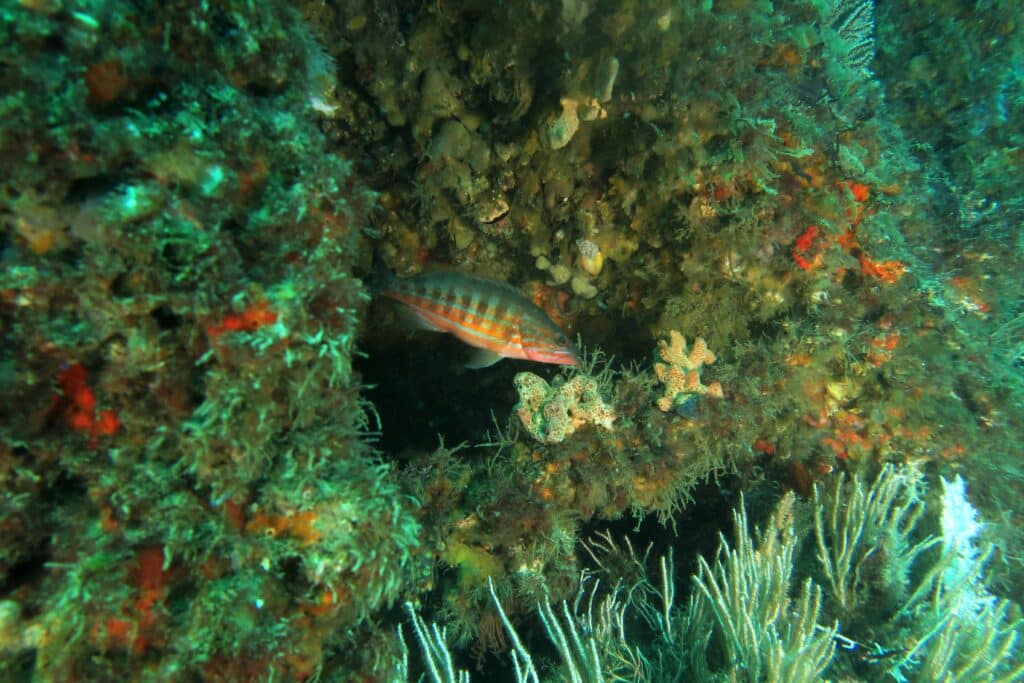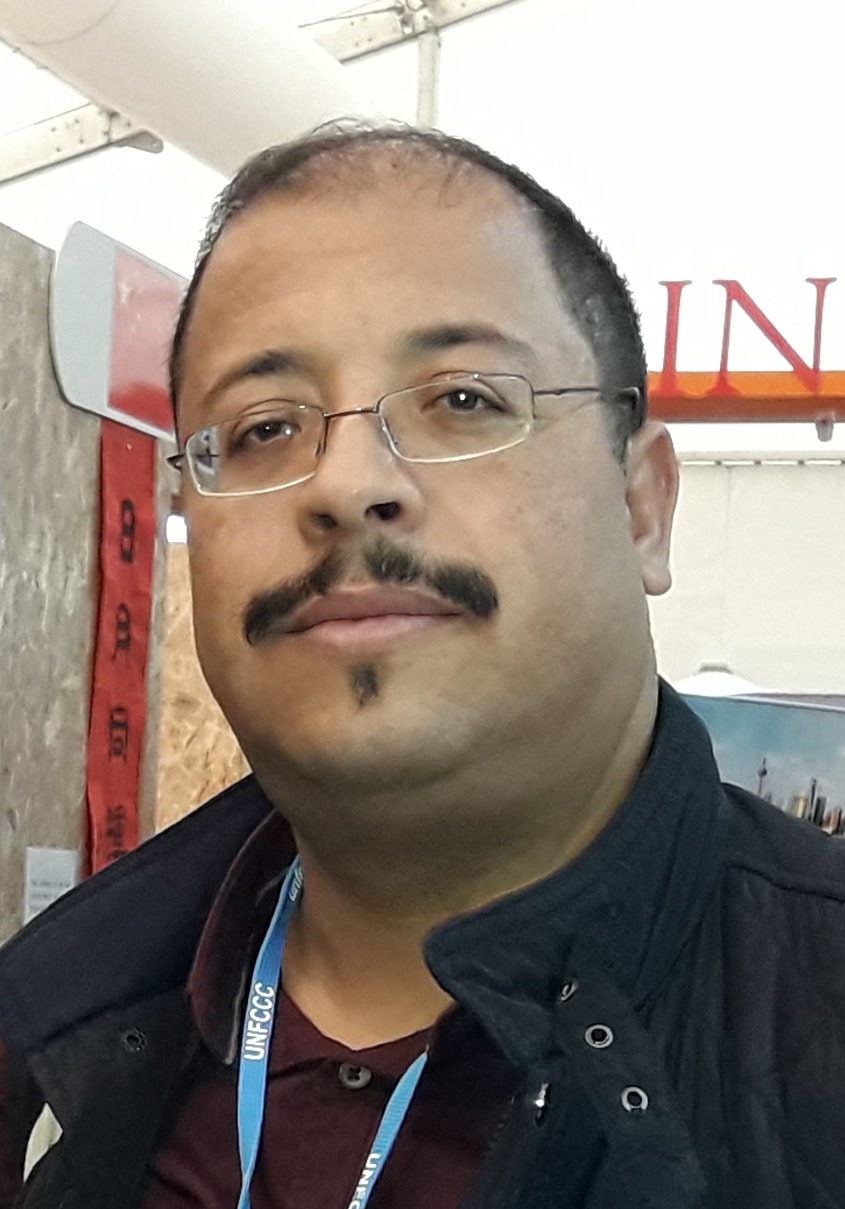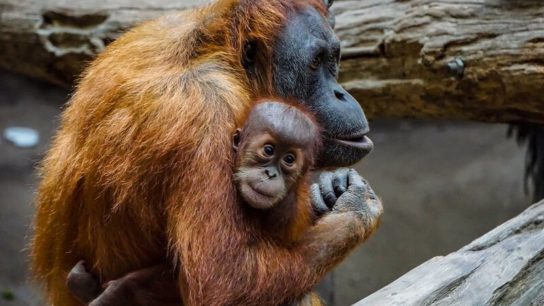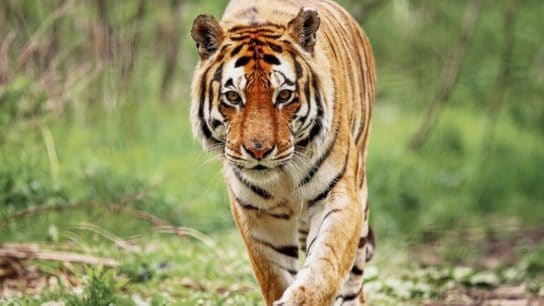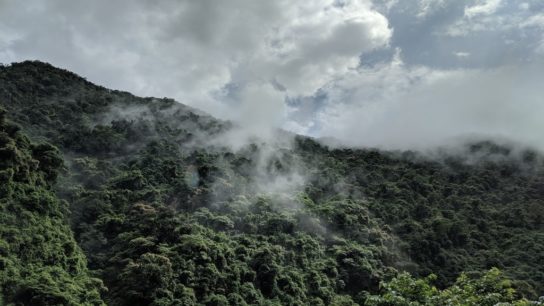A modern method of sustainable management and conservation of fishing resources is the creation of Marine Protected Areas. Can artificial reefs, with their goal to protect vulnerable marine habitats contribute to the restoration of fish stocks?
—
The idea of artificial reefs is based on the natural ability of fish and other marine organisms to rebuild the marine environment, providing them with shelter, protecting them from predators, and helping in the regeneration of the marine ecosystem. The initiative to install artificial reefs in Morocco’s northern region is one of the modern means to combat illegal fishing, especially trawlers that violate maritime laws and deliberately use their nets in shallow waters, which leads to the elimination of natural fisheries and small fish.
Artificial reefs use materials that mimic natural reef systems, such as concrete. In some cases, in some regions of the world, shipwrecks are refloated, but usually, concrete is used to increase the diversity of habitats and enrich the marine environment.
The goal of creating artificial reefs includes the establishment of suitable habitats for fish and other aquatic organisms, contributing to the preservation and increase of biodiversity. They consist of large pyramids made up of concrete blocks with cavities and holes to provide shelter and create habitats.
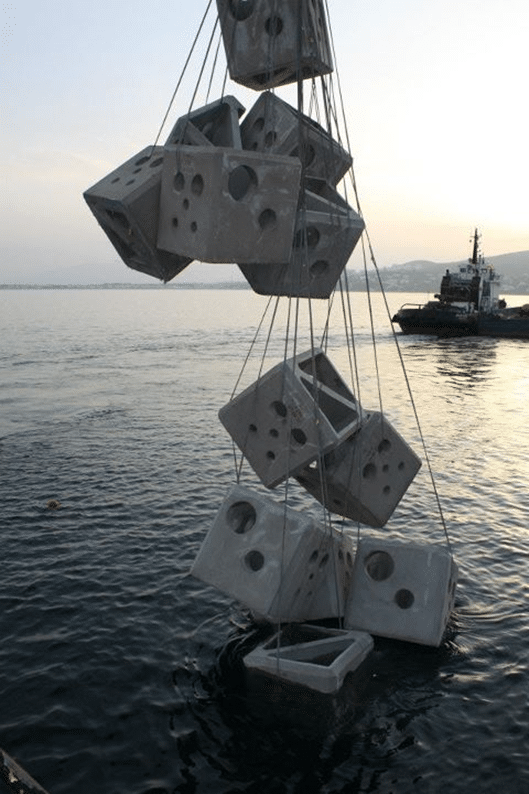
The seven-meter-high concrete blocks were immersed in the waters of the “Martil” sea/ Photo: Dr. Mohamed Naoufal Tamsouri/National Institute of Fisheries Research.
The placement of artificial underwater reefs in the Mediterranean region of northern Morocco has several objectives, such as protection against illegal fishing, as well as providing breeding areas. They form a shelter for populations of animal and plant organisms.
Artificial reefs are classified into three types:
- Productive economic reefs that create biodiversity and biomass and raise marine wealth in order to exploit them in the field of fishing.
- Environmental protection reefs that reduce the damage caused by trawling.
- Recreational reefs that allow diving.
In order to cope with the constant pressure exerted by human activities on the Moroccan coast as well as the loss of biomass and marine biodiversity, artificial reefs have become a vital development tool, allowing the integrated management of the coastal zones.
To raise awareness of the importance and necessity of preserving coastal marine ecosystems in Morocco, the marine fisheries sector of the Ministry of Agriculture and Fisheries and the National Institute for research in Marine Fisheries (INRH), within the framework of a partnership, prepared a project for the design and development of two artificial reefs in the Mediterranean marine area “Martil”. This project was implemented on December 2011 within the framework of the new strategy for the development of the marine fishing sector (Plan Halieutis), as well as in accordance with the programme “Strengthening tools and means of protecting national fishery resources.” An estimated budget of 37.5 million dirhams was allocated to it, funded by the Fisheries Development Fund.
You might also like: 5 Coral Reefs That Are Currently Under Threat and Dying
The main objective of the Martil artificial reef project is to restore and rehabilitate degraded marine habitats, preserve and enhance marine biodiversity, enable the rational exploitation of biological resources, improve access to fishing communities, and then develop recreational diving in this tourist area. The results of monitoring by the National Research Institute of Marine Fisheries showed the effectiveness of artificial reefs as a means of vital development of coastal zones. The initiative to install artificial reefs reflects positively on the economic and social dimension of the region. It is a glimmer of hope that man not only creates tools that destroy nature and that with a little imagination and awareness, he can create an alternative that seeks sustainability and wisdom.
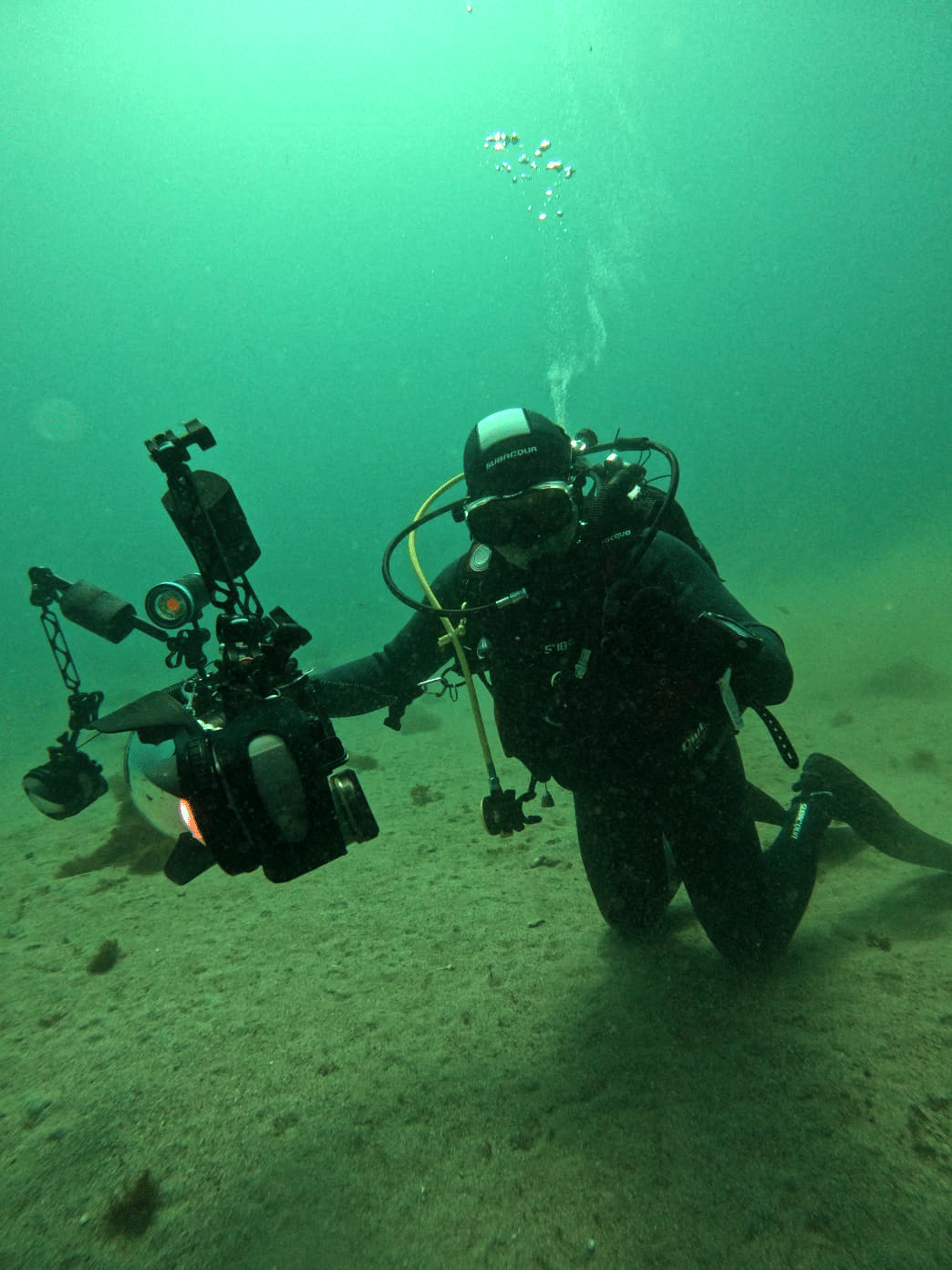
Diver doing a scientific follow-up of the artificial reef. Photo: Mohamed Naoufal Tamsouri/ National Institute of Fisheries Research.
The creation of such artificial reefs makes it possible to increase the fish resources of the region. It has an impact in terms of protecting and restoring a rich and diverse marine ecosystem through the production of persistent organic plants and animal organisms, feeding the links of the food chain.
In order to cope with the constant pressure exerted by human activities on the coast and the loss of biomass and marine biodiversity, artificial reefs have become one of the vital development tools, allowing the integrated management of the coastal strip and resources.
According to Dr. Mohamed Naoufal Tamsouri, a researcher at the National Institute of Fisheries Research (INRH) in the northern town of M’diq, the artificial reef operation has achieved good results by improving the qualitative richness of the area benefiting from the project and rehabilitating degraded habitats.
Since the beginning of the project, the research institute has provided technical and scientific monitoring from all aspects, especially studies, construction and installation, where scientific monitoring by diving is carried out gradually as the situation continues to progress.
Dr. Tamsouri added that once all the fragmented concrete reef were laid, physical and biological monitoring of the submerged artificial reefs was carried out every three months, to monitor their behavior and their impact on the environment. The first recorded results showed that a new settlement occurred gradually, first with pioneer species, others quickly replacing them, and then this succession slowed down with the stabilization of species in the stages of maturity, which usually have a longer lifespan. The speed of this organization of the species community is noted, to some extent depending on the depth and location settings, in accordance with the hydrological circulation.
Since the beginning of the immersion of concrete blocks, the continuation and increase of the qualitative richness of settlements inside the coral reefs has been recorded.
The first stage was characterised by the fixation of the biofilm, which started from the fifteenth day. Subsequently, the submerged structures were covered with algae of various species, and soon settled invertebrates, sponges and larvae gathered in the plankton. It hosts thousands of species of fish, mollusks, crustaceans and others. This grouping of species is a coincidence, with no biological relationship between them. At the end of the fourth month, many new species manifested themselves, for which artificial reefs became a shelter, a food zone, and a breeding area (for squids). And after 12 months, there has been a noticeable increase in the number of mobile individuals and species, which confirms the attractive effect of artificial reefs.
Featured image: Dr. Mohamed Naoufal Tamsouri/National Institute of Fisheries Research.
You might also like: Improving the Resilience of Coral Reefs




